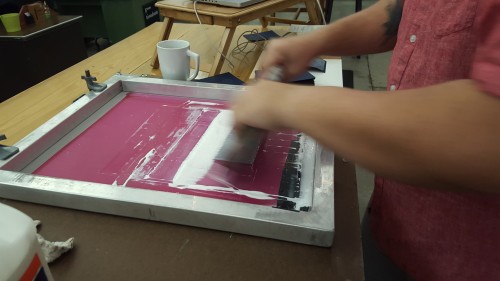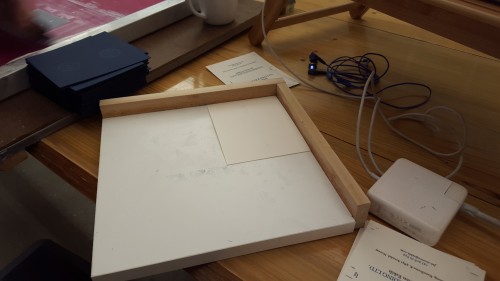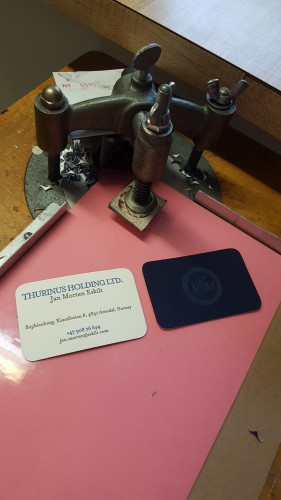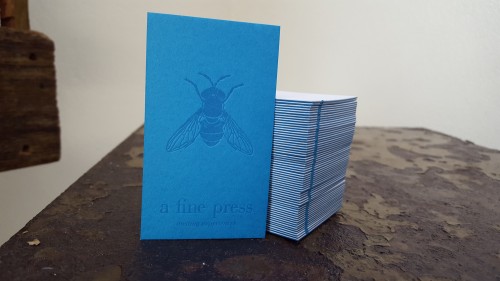One of my favorite shop techniques happens to be one of the most labor intensive. It’s duplexing:
When we glue two or more substrates together to make a sandwich of printed goodness.
We typically duplex a project for one of a few reasons:
- To obtain a paper thickness unavailable from the mill. This would be something like glueing up two sheets of 236# Savoy for a ridiculously thick 472# sheet. Egads! That’s well over 1/16″ thick!
- To achieve contrast by duplexing two different stocks. This might be to maximize the quality of print methods for each side or to get two very different colors on the same sheet.
- To maximize the quality of 2-sided letterpress or embossing. Any time you print with deep impression, it affects the other side of the sheet. That means that a business card with art that overlaps front-to-back will have to be compromised it it’s printed on one sheet. Now, we can keep the effects of it to a minimum, but the best way to deal with it is to print both sides separately and then duplex them. This will almost completely eliminate any issues with two-sided printing while maintaining maximum depth of impression.
Duplexing isn’t without its challenges. Especially when it’s used with two-sided printing. Front-to-back register can have reduced consistency. This usually just means more waste (we start printing much more than you need).
Many shops use a device made specifically for applying glue for projects like this. The most commonly used one is the Potdevin. If you’ve ever worked in an office with one of those old-school envelope lickers with the ceramic wheel half-submerged in water (what? I’m the only one who’s ever had to use one?), it’s a lot like that.
The challenge I see with the Potdevin is that it glues up the entire sheet, leaving little room to grip it without getting glue all over your hands. That’s why we actually screenprint our glue at A Fine Press. Yep. The same deal as you’d get for your favorite tshirt or band poster.
We start with two sheets, printed and separate.
The screen leaves enough margin of unglued area. Keeps my hands clean!
The jig helps line everything up accurately.
The glued sheet goes down, glue up, then the second sheet on top.
Printed, duplexed, cut, and corner-rounded
Here are the edges of a duplexed sheet
In case you’re wondering, duplexed sheets don’t usually fall apart. The glue is, in most cases, stronger than the paper and as long as there’s good adhesion, the paper will tear before the glue fails.








Trackbacks/Pingbacks